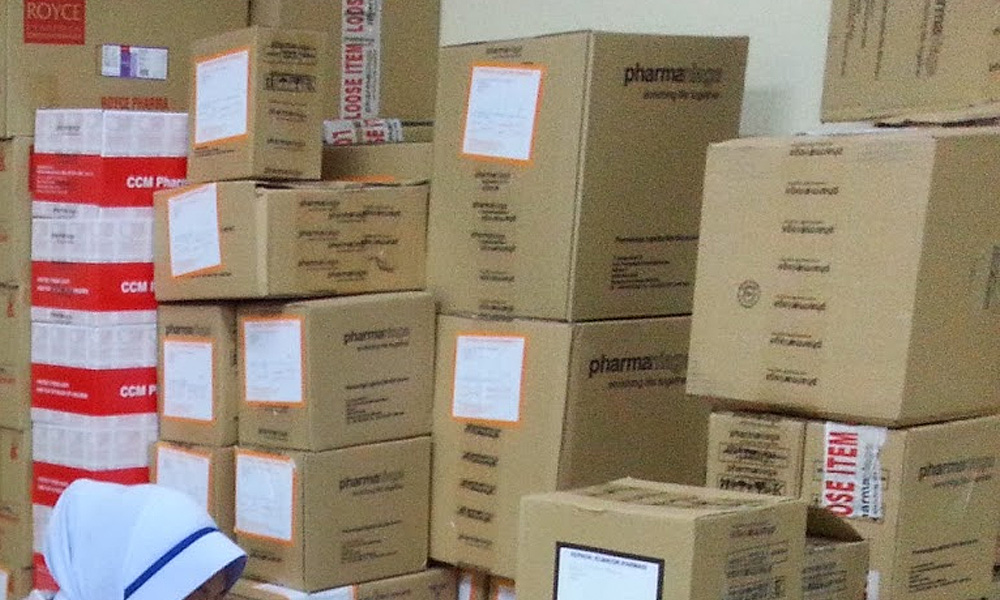LETTER | On May 2019, Health Minister Dzulkefly Ahmad announced that the ministry intends to use External Reference Pricing (ERP) to benchmark drug prices in Malaysia against seven to eight selected.
This will be done by choosing the average three lowest reference prices to determine the ceiling price sold to dispensing channels in Malaysia.
This is following the cabinet decision in April, whereby the Ministry of Health (MOH) would work with the Ministry of Domestic Trade & Consumer Affairs (MDTCA) on implementing the control of medicines price to gazette a new regulation under the MDTCA Price Control and Anti-Profiteering Act 2011.
According to MOH’s recent disclosure in Parliament, a ceiling price will be imposed at both levels of supply, namely wholesale through ERP and retail.
Here are our industry’s serious concerns regarding the proposed implementation of the Medicines Price Control:
1. Process gaps
While the Pharmaceutical Association of Malaysia (Phama) is aligned and supports the government’s vision of improving access to medicines, we would like to point out that the decision to impose price control was made without proper and meaningful consultation with various stakeholders in the industry made up of local and international suppliers, distributors, general practitioners, private hospitals and community pharmacists.
2. Proposed mechanism is inappropriate for Malaysia
While the Ministry of Health is adamant to implement a medicines price mechanism using External Reference Pricing (ERP), there are several flaws in the mechanism:
i) Differences in the reference countries do not allow a fair and accurate comparison to ERP
The prices in different markets are not comparable due to differences in the burden of disease, indications, willingness (preferences) and ability (income) to pay, market structures, and in the components included in prices e.g. distributor margins, sales taxes, etc.

Medicines may be at different stages in their life cycle in different countries, potentially with different intellectual property protection. Furthermore, differences in pack size and presentation may complicate comparisons.
Today, publicly available price data used for ERP are derived from countries with a single-payer healthcare system, which is inappropriate to be used as the benchmark and applied on Malaysia’s dichotomous system that consists of both private and public healthcare sector.
ii) Phased implementation alluding to discriminative approach
The proposed phased implementation of the Medicines Price Control to apply first on single-source products, which are generally patent-protected, before considering the approach on all other items (namely medicines with generic alternatives) clearly discriminates against foreign companies.
iii) Controlling medicines price will not solve the core issue of reducing healthcare cost
Controlling medicines price will not make a significant impact to the goal of reducing healthcare costs as pharmaceuticals only account for 14 percent (RM2.92 billion) of OOP expenses, with outpatient services accounting for 46 percent (RM9.9 billion) and inpatient services making up 24 percent (RM5.1 billion) of OOP expenses respectively.
Private healthcare centres will only mitigate the loss of revenue from medicines by shifting their source of revenue to other healthcare services, such as consumables, medical devices and hospital bed charges.
3. Serious unintended consequences to the healthcare ecosystem
The private healthcare system in Malaysia exists in an ecosystem of dependencies with stakeholders such as local and international suppliers, distributors, general practitioners, private hospitals and community pharmacists.
Policy changes that are done without proper engagement, consultant and cost-benefit analysis will have far-reaching and negative consequences to the growing sector that is now currently driving domestic growth while addressing the need of patients in the private sector.
i) Impact dispensing channel
If the Medicines Price Control is implemented in the current form proposed by MOH, healthcare providers across various dispensing channels with low margins, such as community pharmacists and general practitioner (GP) clinics, will have no other means to cover operational expenditure, leading to potential closure of dispensing outlets, especially in the rural areas.

This will not only limit access to medicines but also worsen the disparity in access to innovative medicines between urban and rural patients. This will ultimately cripple the delivery of primary healthcare services and worsen the congestion in government healthcare facilities and healthcare budgetary constraint as private sector patients migrate into the public sector.
ii) Putting at risk patient access due to delay in medicines access and availability
Today, pharmaceutical companies already face numerous barriers to introducing the latest, most innovative medicines to patients in Malaysia. Introducing such control mechanisms may pose risk to the patient access to the latest and innovative medicines as multinational companies will be forced to delay or withdraw innovative medicines from the market due to the unfavourable business environment and barriers to market access.
This will further deprive Malaysia’s first-class hospitals from dispensing the latest cutting-edge innovative medicines, thus denying patients the best healthcare.
iii) Negative perception on country’s investment climate
Medicines price control will have negative repercussions as it will likely be perceived as an expansion of the Government Use Licence (GUL) by the international trade community and risk Malaysia being seen as distorting the free market.
The move towards Medicines Price Control may propel USTR to upgrade Malaysia’s Out-of-Cycle to Watch/Special Watch list status. This will ultimately impact Malaysia’s image to attract foreign investments especially in the run-up to its chairmanship of Apec 2020.
iv) Medical tourism
Medical tourism is a key growth area with an annual growth target of 25 percent will also be impacted as medical tourists would consider other countries as they would not be able to access innovative medicines in Malaysia.
This will pose risk to the vision of Malaysia Healthcare Travel Council, which has estimated that by 2020, over two million international patients would visit Malaysia and its forecast revenue increase to around US$680 million.

Medicines Price Control will only further erode patient experience, treatment options and further impede access to innovative medicines that may harm future patient care and attractiveness of Malaysia for medical tourisms.
Phama’s position
We strongly urge the government of Malaysia to hold back the proposal on Medicines Price Control to set ceiling wholesale and retail prices for medicines as this is a piecemeal solution and it will not address the long-term healthcare cost challenges.
Such a counter-intuitive move will create more serious unintended consequences and problems, instead of driving Malaysia towards the policy objectives and assurance of affordable, accessible and good quality healthcare.
Instead of Medicines Price Control, we advocate for the declaration of wholesale prices in a free market as this will allow the government to establish a baseline price, which would encourage even more competition among medicine manufacturers. This is aligned with Good Pharmaceutical Trade Practices (GPTP), issued by the Pharmaceutical Services Programme of the Ministry of Health.
This guideline is towards ensuring good trade practice across the pharmaceutical distribution chain, including that medicines needed for quality healthcare shall be affordable and accessible to all. One of the five components of GPTP entails the provision of an official wholesale price list and a formal announcement on price revision or any change of trading terms from suppliers to its consumers.
Price visibility should be simultaneously implemented across all medicines, i.e. innovators and generics as well as at all dispensing channels for patients benefit.
Finally, our recommendation is to take a holistic approach to address the concerns behind the high healthcare cost.
The core issue with healthcare affordability and accessibility described to have led to high medicines price is the entrapment of patients having to pay for these medicines at the centres they are seeking healthcare, without prior information that could help them to compare what they are paying for and decide where they can choose to get it from.
The views expressed here are those of the author/contributor and do not necessarily represent the views of Malaysiakini.


